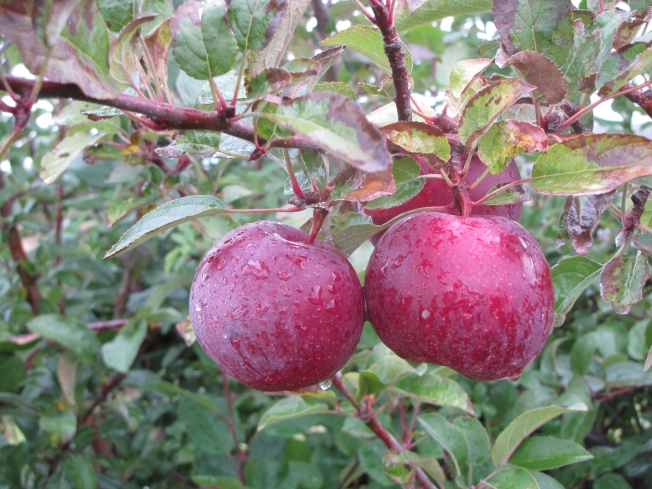 I HAVE JUST EMERGED from a third day in the research library at Old Sturbridge Village, poring over a collection of early American books on agriculture donated to the Village decades ago by my late Uncle Mason. I knew my uncle had a strong connection to the Village (he was a trustee for many years), but it was only about a month ago—serendipitously as I was about to embark on research for my new book about apple growing in New England—that I learned of the C. Mason Powell Agricultural Library.
I HAVE JUST EMERGED from a third day in the research library at Old Sturbridge Village, poring over a collection of early American books on agriculture donated to the Village decades ago by my late Uncle Mason. I knew my uncle had a strong connection to the Village (he was a trustee for many years), but it was only about a month ago—serendipitously as I was about to embark on research for my new book about apple growing in New England—that I learned of the C. Mason Powell Agricultural Library.
The collection is extensive, and there are some rare texts, obscure gems like The Pomological Manual, or, A Treatise on Fruits, Part I, from 1831, seed catalogs from the 1820s and 1830s, and The Compleat Planter & Cyderist, published in London in 1685. I will use some of the information I gleaned in my talk about apple growing in New England at the Norcross Wildlife Sanctuary in Wales, Massachusetts, this Saturday, April 20, at 1:30 p.m.
The Compleat Planter’s uncredited author has this take on cider apples: “The more Red any apple hath in its Rind, the better for Cyder, the paler the worse, no sweet apple that hath a rough Rind is bad for Cyder.”
The 1670 book Two Voyages to New England by John Josselyn reports that the New World’s apple trees are subject to two diseases: “Meazels” and “Lowziness.” I will describe them in Saturday’s talk.
Then there is this recipe for Apple Butter from the September 1838 edition of the monthly agricultural newspaper, The Cheshire Farmer, published in Keene, New Hampshire:
Apple Butter
“Our friends may rely upon it, that the recipe below, if regarded will give them an excellent article. The advantage of it over apple sauce is not only that it is more delicate and palatable, but it will keep for years without requiring to be scalded over. A family may make at once enough to feast for years. This is the general practice in Pennsylvania. When taken from the kettle at the close of the operation of making it, it bears about the same consistency as jelly; as it grows cold it becomes harder, and save its color, which is a dark red, it comes upon the table very much like butter, and answers an excellent purpose as a substitute for that article—quite a desideratum when butter is a quarter of a dollar per pound.
“Recipe—Boil two barrels of cider into one. Then insert three bushels of apples pared & cored. Keep the contents boiling, constantly stirring the same meanwhile till the same becomes as thick as hasty pudding. If you wish to give it any flavor by means of spice, or essence then is the time. The work is now done. Put away the butter in earthenware pots or jars, and thence cut out a lump for the table as occasion may require. It spreads upon bread precisely like butter. Try it brother farmers.—Doubtless, if well made, it would go quick in market.”
I will use my research with my recent book, America’s Apple, for my presentation on apple growing in New England, including a look at Massachusetts’ two famous apple lovers, John Chapman (aka Johnny Appleseed), and Henry David Thoreau.
I will have copies of America’s Apple for sale and signing at the event.
The Norcross Wildlife Sanctuary event, rescheduled from the February 9 blizzard, is free and open to the public (people are encouraged to preregister due to limited space).
